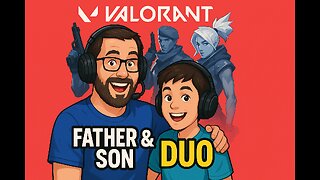Premium Only Content

𝚃𝚑𝚎 𝚑𝚒𝚎𝚛𝚊𝚛𝚌𝚑𝚢 𝚒𝚗 𝚝𝚑𝚎 𝙶𝚘𝚛𝚒𝚕𝚕𝚊 𝙵𝚊𝚖𝚒𝚕𝚢-𝙼𝚐𝚊𝚑𝚒𝚗𝚐𝚊
Mgahinga Gorilla National Park, located in southwestern Uganda, is a vital sanctuary for the critically endangered mountain gorillas. While the park is relatively small, it's a significant part of the larger Virunga Massif, which spans Uganda, Rwanda, and the Democratic Republic of Congo, and is home to a substantial portion of the world's mountain gorilla population.
Gorillas in Mgahinga National Park:
Mgahinga is unique in Uganda for being the only park where you can track both mountain gorillas and golden monkeys, earning it the nickname "where silver meets gold." For gorilla trekking, Mgahinga typically has one habituated gorilla family available for tourists: the Nyakagezi family.
The Nyakagezi family is well-known for its fascinating dynamics. Historically, this group was famous for its tendency to roam across the borders into Rwanda and Congo, making tracking uncertain. However, in recent years, they have become more settled within Mgahinga, making them a reliable group for visitors. What's particularly interesting about the Nyakagezi family is the unusual presence of multiple silverbacks (mature male gorillas) who coexist relatively peacefully within the group, which is not always the case in gorilla social structures. The current dominant silverback of the Nyakagezi group is Mark, who took over from his father, Bugingo, who remarkably still remains within the family.
Hierarchy in Gorilla Troops:
Gorillas live in highly structured social groups called "troops" or "families," led by a dominant male, known as a silverback. The hierarchy within these groups is crucial for their survival and social cohesion:
* Silverback (Dominant Male): This is the undisputed leader of the troop. He is easily identified by the saddle of silvery hair on his back, which develops with age (typically after 12 years old). The silverback's responsibilities are immense:
* Decision-maker: He determines the troop's movements, where they will feed, and when they will rest.
* Protector: He defends the troop from predators, rival gorilla groups, and any perceived threats.
* Mediator: He settles disputes within the group and maintains peace.
* Breeding rights: In most single-male troops, the silverback has exclusive or primary breeding rights with the adult females.
* Blackbacks (Younger Adult Males): These are younger males (around 8-12 years old) who have not yet developed the silver back. They serve as assistants to the dominant silverback, providing support in defending the group. In multi-male groups, there's usually a clear hierarchy among the silverbacks themselves, with one being dominant over the others. Sometimes, blackbacks may eventually challenge the dominant silverback for leadership or leave to form their own troops.
* Adult Females: They form the core of the troop and have their own social hierarchy among themselves, often based on the order in which they joined the troop or their relationship with the silverback. They are responsible for raising the young, and their bonds with the silverback are essential for mating opportunities and protection.
* Juveniles and Infants: These are the young gorillas, who learn social behaviors and survival skills from their mothers and other troop members under the watchful eye of the silverback.
The stability and well-being of a gorilla troop heavily rely on the strength and leadership of its silverback. If the dominant silverback dies, the troop can sometimes disperse, or a new male (often a blackback from within the group or a lone silverback from outside) will take over.
-
 1:28:31
1:28:31
The Charlie Kirk Show
5 hours agoTHOUGHTCRIME Ep. 100 — Turning Point Halftime? Potatoes and Katie Porter? Hasan the Dog Shocker?
91K46 -
 6:33:19
6:33:19
SpartakusLIVE
6 hours agoNEW Update, NEW Meta || Zombies Mode is BACK - Smokes NURFED
56.2K5 -
 13:10
13:10
Robbi On The Record
5 hours ago $3.49 earnedThe War on Christians | China’s Surveillance & Nigeria’s Killing Fields
32K29 -
 1:24:49
1:24:49
Flyover Conservatives
1 day agoYour Home Just Became a Healing Room — The Truth About Red Light & Med Bed - Jonathan Otto | FOC Show
35K4 -
 2:11:35
2:11:35
Mally_Mouse
4 days ago🎮 Throwback Thursday! Let's Play: Kingdom Hearts 1 pt. 2
27.8K2 -
 3:00:37
3:00:37
Barry Cunningham
8 hours agoBREAKING NEWS: LETITIA JAMES INDICTED FOR MORTGAGE FRAUD!!! LIBTARD TEARS ARE FLOWING!
60.3K37 -
 1:17:42
1:17:42
Glenn Greenwald
8 hours agoUS/Venezuela Escalations: Revisiting Key Developments and the Push for Regime Change | SYSTEM UPDATE SPECIAL
116K155 -
 3:13:40
3:13:40
ProvenTactics
5 hours agoFPS Shooter Games
17.7K3 -
 LIVE
LIVE
Phyxicx
5 hours agoHarvester - The Funniest, Most Deranged 90s Game Ever | 18+ | 10/9/2025
44 watching -
 13:09:28
13:09:28
LFA TV
1 day agoLIVE & BREAKING NEWS! | THURSDAY 10/9/25
183K28